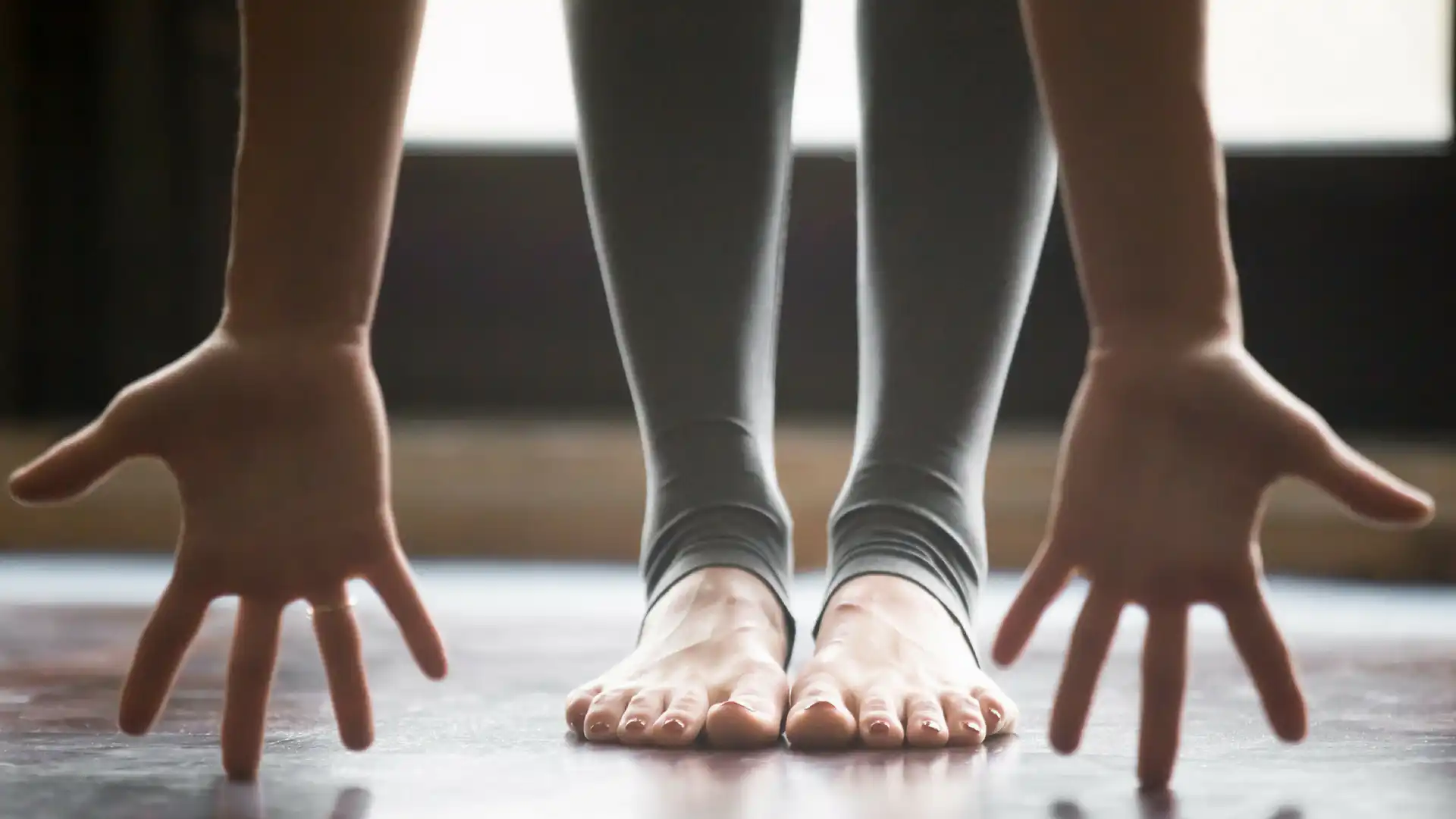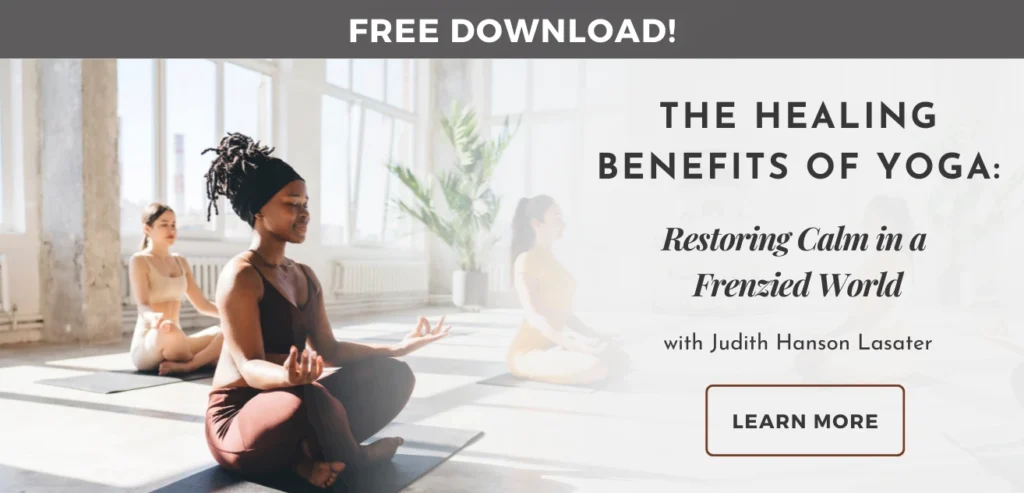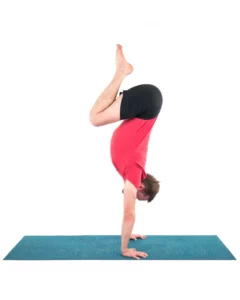The Yoga of Now: The Art of Being Present with Your Practice

As yoga has increasingly become integrated into modern society, how and why we practice has changed. What constitutes popular yoga is completely different from what it used to be. In the ’80s and ’90s, Hatha Yoga was the most common form, with Iyengar-style practice as its most popular subset. Kundalini Yoga had a strong, but smaller following. Ashtanga was starting to get a foothold, but except for the relatively sparse Ashtanga classes, Vinyasa-style asana wasn’t the ubiquitous practice it is these days.
Different Yoga Styles for Different Times of Life
Even though Iyengar yoga was popular back in my early days of practice, it was still a small and relatively tight-knit community. You’d see the same faces at workshops all around the Intermountain West. I was one of those faces. I sometimes miss the small community of teachers from all over the West who gathered regularly to learn from senior teachers and from each other.
Things have changed in my own body and mind as well. More than four decades of practice have shifted my understanding, attitudes and priorities. And aging has changed my body.
If we’re lucky, our bodies will survive into old age. There’s no getting around the fact that our bodies change as we age. It’s not a mistake. It’s written into our DNA. As with any physical practice, our asana practice must change in order to continue to be relevant to our lives.
Back in the ’80s and early ’90s, fancy poses—the so-called “advanced” poses—were important to me. It’s not an exaggeration to say that they helped define my self-worth. Even though I knew that fancy poses are not what the practice was about, my body’s ability to do them made me stand out. It made me feel special.
My body’s abilities bolstered my sense of worth, but I can’t say that achieving fancy poses was ultimately all that satisfying. Even though I could easily perform most of the “advanced” poses, I still never felt good enough. As long as I was focused on achieving fancy yoga poses, there was always another pose out there that was better than the asana I was currently practicing.
What the Yoga of the Past Leaves in its Wake
I’m not sure when this happened—I think it was a gradual process—but in the past 10-15 years, my practice has become simpler, slower, more present-focused. One by one, fancy poses have dropped away, and much to my surprise and pleasure, I’m totally fine with it.
Sure, there have been a few times when I’ve thought wistfully about those full Pigeon Poses and 30-minute Headstands. But my body and mind have changed. Extreme poses no longer feel healthy. Thirty-minute headstands and full Pigeon Poses don’t contribute to my ability to live gracefully in my everyday life.
I have two choices: I can spend my time and energy wishing for the return of my past (perceived) glories, or I can finally enjoy my practice just as it is in a way that I couldn’t at the time I was rocking all those crazy poses. It’s ironic that my former Instagram-worthy practice generated a lot less happiness than my current simple, mindful practice does. Letting go of the pressure to perform has been a huge relief.
In a talk I heard years ago, author and meditation teacher Joseph Goldstein likened dwelling in the past to dragging around a corpse. Those past hurts and triumphs, the bodies of our past and those fancy poses are gone. Continuing to dwell on them weighs us down and makes it impossible to engage in our lives right now.
The best way to enjoy a rich and satisfying yoga practice is to be present with your practice as it is. That’s where the juice is. Now is where the yoga is. The first of Patanjali’s yoga sutras says: “Now begins the study of yoga.” There’s no yoga asana in the future, or in the past, that will ever be more transformative than the one you’re practicing right now.
Let go of the future. Let go of the past. Commit totally to your yoga practice in this and every moment. It will never be better than it is right now.
Also from Charlotte Bell – Cool Down: Seven Steps For A Deeply Restorative Twist.
Study with YogaUOnline and Linda Sparrowe: Yoga For Balancing Mood – A Woman’s Guide To Emotional Well-Being.
Also, read...
Creating a Samskara of Gratitude: Transforming Your Yoga Practice and Your Life (Free Video with Judith Hanson Lasater)
Teaching Svadhyaya: 3 Ways to Encourage Self-Study in Yoga
In Celebration of Gray-Haired Yoga – Busting the Myth of the Yoga Body
Related courses

Charlotte Bell began practicing yoga in 1982 and began teaching in 1986. She was certified by B.K.S. Iyengar in 1989 following a trip to Pune. In 1986, she began practicing Insight Meditation with her mentors Pujari and Abhilasha Keays. Her asana classes blend mindfulness with physical movement. Charlotte writes a column for Catalyst Magazine and serves as editor for Yoga U Online. She is the author of two books: Mindful Yoga, Mindful Life, and Yoga for Meditators, both published by Rodmell Press. She also edits Hugger Mugger Yoga Products’ blog and is a founding board member for GreenTREE Yoga, a non-profit that brings yoga to underserved populations. A lifelong musician, she plays oboe and English horn in the Salt Lake Symphony and the folk sextet Red Rock Rondo whose 2010 PBS music special won two Emmys.



